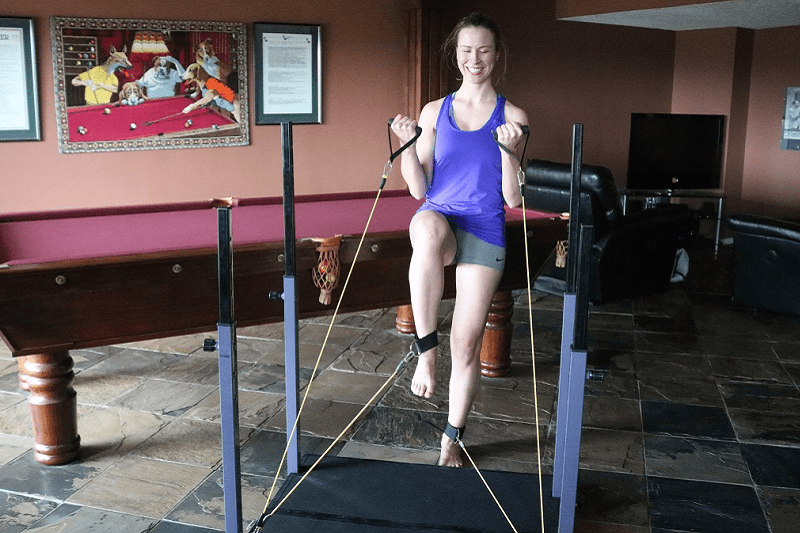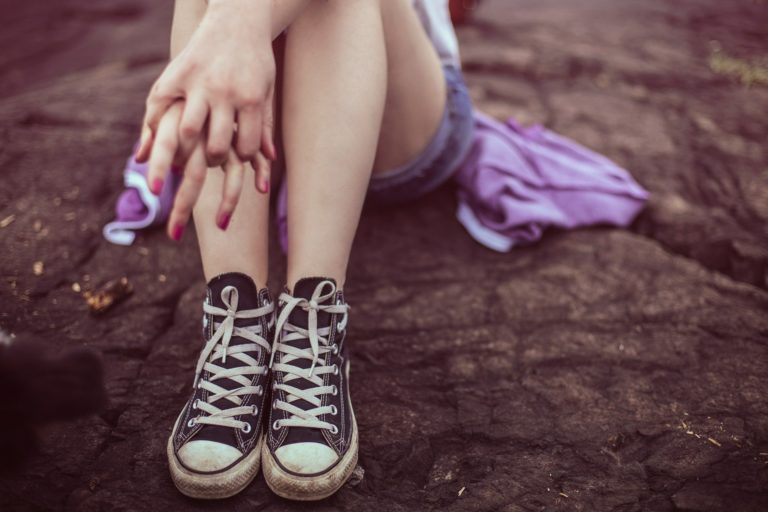
Should You Wear Shoes When Exercising | Time to Get Back on Your Feet
Are you thinking of replacing those well-worn, raggedy cross-trainers? Before you go out and buy that expensive pair of shoes with the fancy arch support, let's answer one question: should you wear shoes when exercising? Let's point out the obvious. If you're exercising in a public place, i.e. gym, studio, etc., it's only common courtesy to wear shoes. Not to mention, hygienic.
But, should you wear shoes when exercising at home?
Let's get some perspective. You're free to jump straight to the answer but I think it's important that you have some context.
We were all, without exception, born barefoot. Not a single person in the history of man was born rocking a pair of Nikes. But, our barefootedness doesn’t last very long. Soon after we are born, we are fitted for our very first (of many) pair of shoes. And from that point, our feet forever lose their freedom.
Don’t get me wrong. Shoes (and footwear in general) serve a very important purpose; shoes protect your feet from the elements. Shoes help you brave the cold and snow, protect you from rocks and glass, and allow you to tackle rough terrain. Not to mention, shoes can be a versatile fashion accessory; matching that black dress, blue jeans, or summer skirt.
Wear Shoes With Caution...?
We live in a society where safety is of utmost concern. Products that are worn, used, applied, or eaten which have the potential to cause adverse short-term and/or long-term effects typically come with some form of “proceed with caution” label.
Cigarettes may cause cancer, medication may cause dizziness, food may cause allergy.
So, why don’t shoes come with warnings?
It is uncommonly known that wearing shoes commonly leads to both short-term and long-term complications. And, not only complications of the feet. Prolonged use of footwear can create issues in other parts of the body. That is the true beauty of the human body. The human body is one large synchronous and harmonious system.
Foot Design 101
In this blog, I want to focus on how shoes affect the integrity of the feet. In this context, I am talking about their design and intended utility. When you break down the foot, you start to realize and appreciate the brilliance of Mother Nature in her design (this design really should be patented). When you think of the design of your feet, you probably think of 5 toes, a sole, and a heel. As simple as feet are in appearance, they are actually quite complex in design. (You can learn more about foot design here)
Each foot is equipped with three arches which, in combination, are designed to adapt to the surface you’re on and to respond with proper movement mechanics and weight distribution. Also embedded into our feet are sensory receptors called proprioceptors, which interpret and send information to the brain. This may include information about the surface you’re on:
- flat or incline
- soft or hard
- hot or cold
and about the foot itself:
- flexed or unflexed
- on or off the ground
- in front of or behind you
Proprioception contributes to both environmental and body awareness.
While we don’t actively think about this, when we walk (the simplest of all daily movements) all of this comes into play. We don’t actively think about this because we have been walking the majority of our lives. But, what about climbing, jumping, throwing, lifting, or moving through multiple planes of motion. Although the mechanics of these movements may differ, they have one thing in common. Through these movements, the feet are the only part of the body in contact with the ground.
So, doesn’t it make sense that optimal movement is dependent on the optimal function of your feet?

The Effects of a Lifetime of Wearing Shoes
Here’s where the dilemma kicks in. The same shoes that were designed to protect you from the elements also suppress the natural ability of your feet. It was mentioned above that the natural arches in your feet are designed to adapt to the environment and to respond with proper movement mechanics and bodyweight distribution.
Shoes, and more specifically the artificial arches and padding that they provide, compromise this natural ability and lead to faulty mechanics. And, because your feet are the foundation of your entire body, the faulty mechanics transfer through the entire posterior chain; calves, hamstrings, glutes, low back, and the joints associated with these muscles. This is how footwear, especially the wrong footwear, causes back pain. This is true when you're just walking! Imagine what happens when you place a heavy weight on your shoulders for squats
Let’s not forget the proprioceptors in your feet. The better the information your brain receives about the surface you’re on (hardness, levelness, etc.) and about your feet (flexed or unflexed, etc.), the better it’s able to make informed decisions on how to move. The quality of this information is correlated to the integrity of your feet’s sense of touch. When you wear shoes, your proprioceptors degrade.
So, it is simple to conclude that a lifetime of wearing shoes will affect the proprioception of your feet. Imagine wearing padded gloves on your hands as often as you wore shoes on your feet. Imagine how much dexterity you would lose.
Now consider that your feet are the ONLY point of contact with the ground any time you’re upright. It’s your base of stability. Once your stability is compromised, an injury is right around the corner.
Should You Wear Shoes When Exercising?
Let’s not go overboard with my message.
I’m certainly not advocating for a life without shoes. Shoes have their place. I can’t imagine trekking through the snow or strolling through the mall without shoes. What I’m saying is that we should all have the ability to perform our activities in our most natural state; without shoes. This includes walking, running, and yes, even exercising.
Your shoes create artificial contact with the ground and, over time, compromises the mechanics of your ankles. This will gradually transcend up to your knees and hips and then ultimately, your spine. The more unnatural, the more this effect is amplified. Those of you who wear high heels all day, keep this in mind.
Exercising without shoes will slowly help you undo and retrain the faulty mechanics you’ve developed and reset the sensitivity of the proprioceptors you’ve suppressed.
And, don’t go all in all at once. You’ve spent a lifetime wearing shoes, so you can’t expect the correction to be immediate.
Like anything else, if you don’t use it, you’ll lose it. And, in the lifetime that you’ve worn shoes, you really haven’t used your feet (properly). Keep in mind, this correction needs to be gradual or you will subject yourself to injury. You are in essence retraining the muscles in your feet. And like the training of any other muscle, training of the feet has to be controlled and gradual.
Whether or not you decide to incorporate shoe-less exercise, consider this. Yoga, karate, and Mixed Martial Arts are fine-tuned arts that not only require skill but also the flawless combination of stability, mobility, agility, proprioception, and precise movements. It is no coincidence that these skilled arts are all trained au natural.
Remember the adage, “your house is only as strong as its foundation.” Well, your body is only as strong as your feet.
I totally get it. Traditional big box gyms won’t condone your barefootedness. But, if you're exercising at home where you have the choice, consider going barefoot. If you're thinking about making the transition to home exercise, the Evolution Training System is a great option.